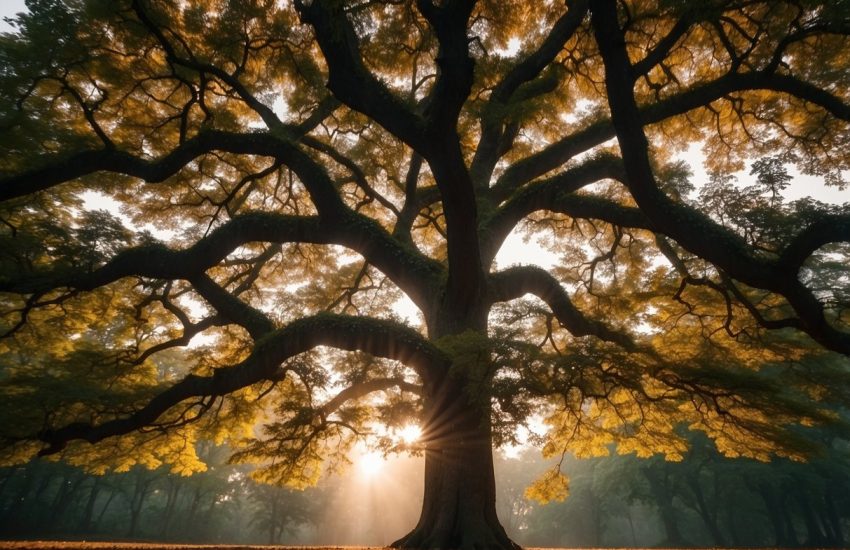Types of Maple Trees in Tennessee: A Comprehensive Guide
Tennessee is home to a variety of maple trees that are well-suited to the state’s climate. These trees are known for their stunning foliage in the fall and their ability to provide shade in yards and landscapes. Maple trees are a popular choice for homeowners and landscapers alike due to their aesthetic appeal and practical benefits.

There are several types of maple trees that thrive in Tennessee, including the Box Elder Maple, Red Maple, Sugar Maple, Silver Maple, and Japanese Maple. Each type of maple tree has unique characteristics that make it well-suited to different growing conditions and landscaping needs. For example, the Sugar Maple is a lovely forest tree that thrives across the growing climates of TN, while the Silver Maple is a fast-growing tree that is well-suited to Tennessee’s climate.
Whether you’re looking to add some color to your landscape or provide shade for your backyard, maple trees are an excellent choice. With so many types of maple trees to choose from, it’s easy to find one that fits your specific needs and preferences. In the following sections, we will take a closer look at the different types of maple trees that thrive in Tennessee and their unique characteristics.
Common Maple Species in Tennessee

Tennessee is home to a variety of maple tree species, each with its own unique characteristics. In this section, we will explore four of the most common maple species found in Tennessee: Sugar Maple, Red Maple, Silver Maple, and Box Elder.
Sugar Maple (Acer Saccharum)
The Sugar Maple, also known as Acer Saccharum, is one of the most popular maple tree species in Tennessee. This deciduous tree is known for its brilliant fall colors, which range from yellow to orange to red. Sugar Maples can grow up to 100 feet tall and have a dense crown of leaves. They are also known for their sweet sap, which is used to make maple syrup.
Red Maple (Acer Rubrum)
The Red Maple, also known as Acer Rubrum, is another popular maple tree species in Tennessee. This fast-growing tree is known for its brilliant red leaves in the fall. Some popular varieties of Red Maple include Autumn Blaze and October Glory, which are known for their exceptional fall color.
Silver Maple (Acer Saccharinum)
The Silver Maple, also known as Acer Saccharinum, is a fast-growing tree that is well-suited for wet soil conditions. This native tree species is known for its silvery undersides of its leaves, which shimmer in the wind. Silver Maples can grow up to 100 feet tall and are a popular choice for landscaping.
Box Elder (Acer Negundo)
The Box Elder, also known as Acer Negundo, is a highly adaptable tree species that is native to Tennessee. This deciduous tree is known for its ash-like leaves and its ability to grow in a variety of soil conditions. Box Elders are also known for their distinctive helicopter-like seeds, which are a favorite food of wildlife.
In conclusion, Tennessee is home to a diverse array of maple tree species, each with its own unique characteristics and benefits. Whether you are looking for a tree with brilliant fall color, a fast-growing tree for wet soil conditions, or a tree that is adaptable to a variety of soil types, there is a maple tree species that is right for you.
Cultivation and Care

Planting and Soil Preferences
When planting maple trees in Tennessee, it is important to choose an appropriate location that will allow for optimal growth and development. Maple trees prefer well-draining soil and can thrive in a wide range of soil types, including clay soil and moist soil. However, it is important to avoid planting maple trees in areas with standing water, as this can lead to root rot and other issues.
To ensure healthy growth, it is recommended to plant maple trees in an area that receives at least partial shade. This will help protect the tree from excessive heat and sun exposure, especially during the summer months.
When planting, it is important to dig a hole that is deep enough to accommodate the tree’s root ball. The hole should be wider than the root ball to allow for proper root growth. Once planted, the tree should be watered regularly to ensure that the soil stays moist.
Growth and Maintenance
Maple trees are low-maintenance trees that require minimal care once established. However, regular maintenance can help promote healthy growth and prevent issues such as disease and pest infestations.
To maintain healthy growth, it is important to prune the tree regularly to remove any dead or damaged branches. This will also help promote healthy air circulation throughout the tree.
In terms of height, maple trees can grow to be quite tall, with some species reaching up to 100 feet in height. As such, it is important to consider the tree’s height when planting, especially in urban areas where space may be limited.
Finally, it is important to be mindful of the tree’s roots when planting and maintaining maple trees. The roots can spread quite far and wide, and can sometimes cause damage to nearby structures and landscapes. As such, it is important to plant maple trees in an area where the roots will have plenty of space to grow without causing damage.


